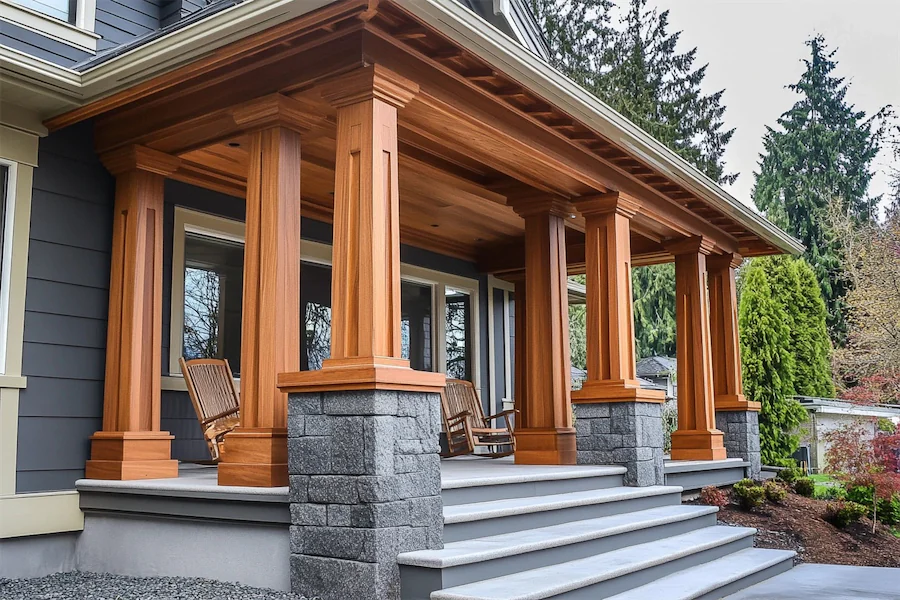Craftsman architecture, which emerged in the early 20th century as part of the Arts and Crafts movement, emphasizes handcrafted artistry and natural materials. A hallmark of this style is the distinctive design of its columns, which contribute both structural support and aesthetic appeal to Craftsman homes.
History and Origins of Craftsman Columns
The Craftsman style originated as a reaction against the industrial revolution’s mass-produced housing elements, promoting a return to handcrafted workmanship and simplicity. Influenced by the English Arts and Crafts movement, American Craftsman architecture often features prominent front porches supported by uniquely styled columns. These columns not only serve as structural supports but also as defining decorative elements that convey the style’s emphasis on natural materials and craftsmanship.
Key Features of Craftsman Columns
Craftsman columns are characterized by several distinctive features:
- Tapered Design: Columns often taper from a wider base to a narrower top, creating a sturdy yet elegant profile. This design enhances the visual appeal and contributes to the structural integrity of the porch.
- Material and Construction: Traditionally, these columns are constructed from wood and may be left natural or painted to complement the home’s color scheme. In modern applications, materials like fiberglass and PVC are also used for their durability and low maintenance.
- Base and Capital Details: Craftsman columns often feature simple, unadorned capitals and bases, aligning with the style’s emphasis on straightforward, honest design. The bases are sometimes set on stone or brick piers, adding texture and grounding the structure visually.
Applications of Craftsman Columns
In Craftsman architecture, columns serve both functional and decorative roles:
- Porch Supports: They provide essential support for expansive front porches, creating inviting outdoor spaces that encourage community interaction and connection with nature.
- Aesthetic Focal Points: Beyond their structural role, these columns serve as focal points that define the architectural character of the home, showcasing the craftsmanship and attention to detail inherent in the style.
Considerations When Incorporating Craftsman Columns
When integrating Craftsman columns into a design, consider the following:
- Proportionality: Ensure that the size and taper of the columns are proportionate to the overall dimensions of the porch and the home, maintaining visual harmony and balance.
- Material Selection: Choose materials that align with the desired aesthetic and offer durability appropriate to the local climate. While wood offers authenticity, modern materials like fiberglass or PVC can provide enhanced longevity and reduced maintenance.
- Base Integration: Consider incorporating stone or brick bases to anchor the columns, adding texture and reinforcing the connection to natural materials central to the Craftsman ethos.
Conclusion
Craftsman columns are integral to the charm and character of Craftsman-style homes, embodying the movement’s principles of simplicity, handcrafted quality, and harmony with the surrounding environment. Their thoughtful design and placement not only fulfill structural needs but also celebrate the artistry and attention to detail that define the Craftsman tradition.
